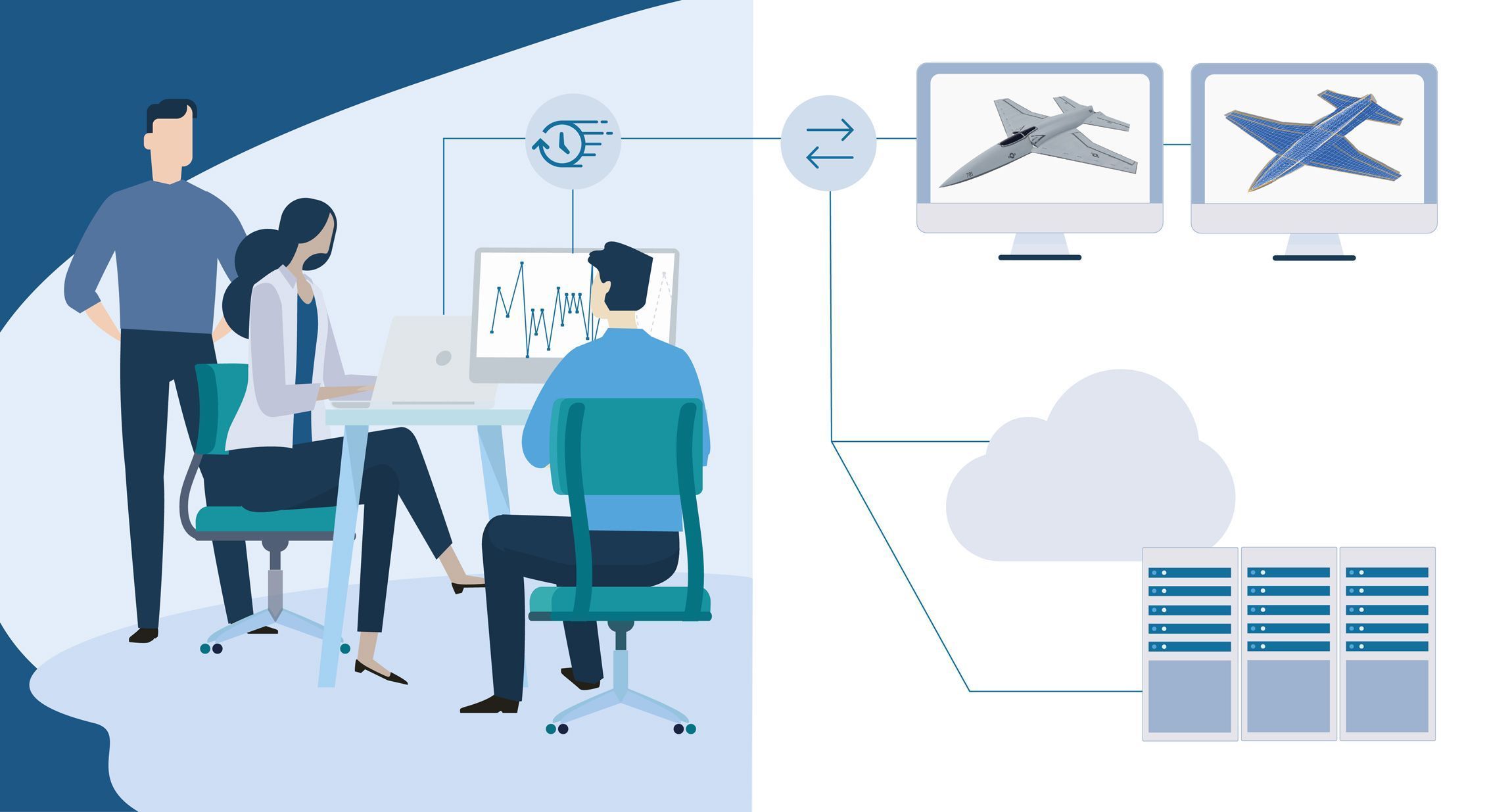Server-based MDO: the preferred architecture of the future
Written by Roel Van De Velde
20 February 2020 · 5 min read

In a previous blog, I wrote about the use of ESTECO technology in the AFRL EXPEDITE program, under contract with Lockheed Martin Skunk Works. Now that the unclassified phase of the program has come to an end, several interesting conclusions were presented by Lockheed Martin at the AIAA 2020 SciTech Forum. Let’s take a closer look as to why one of the most significant outcomes is that “server-based MDAO, modeling lifecycle management, and automated distribution is the preferred architecture” (some terminology has been extracted verbatim from the paper and presentation).
Multidisciplinary Design Optimization: Desktop versus Server
Most traditional commercial MDO frameworks are desktop clients, as they have their roots in the mid-’90s when web browser technology was still in its infancy. Capabilities of these tools usually include integrating different solvers and automating the simulation process, conducting design of experiments, training response surface models, running multi-objective optimization and visualizing results.
They typically require an MDO expert to connect all the individual disciplines (e.g. geometry, aerodynamics, structures, etc.), define the bounds of the design space, specify objectives and constraints, select an optimization algorithm and finally execute and conduct trade studies, all on a single desktop.
In theory, this works. But in reality, this practice can be far from smooth. Having to (re)connect parts of the overall workflow if changes have been made to domain-specific models, not knowing their latest version and thus losing track, or effectively communicating results to colleagues and decision-makers are common frustrations.
Even at a more basic level, getting all the models in the first place might be a challenge. It is not uncommon for domain experts to be reluctant to share their data and knowledge due to fear of misuse or lack of control, which makes it hard to live up to the “M” in MDO - especially in siloed companies.
Domain experts can be reluctant to share their data and knowledge due to fear of misuse or lack of control, which makes it hard to live up to the "M" in Multidisciplinary Design Optimization"
A server-based approach can remove or mitigate these frustrations. To start, user authentication and authorization guarantees that only authorized users can access data, and permissions dictate what they can and cannot do with it.
Version control from a single source manages the different versions of models, data and workflows, and makes it easy to upgrade, debug or roll back the overall MDO workflow to a known state.
Collaborating with colleagues, sharing models, (re)using data and communicating results can be stimulated through a modern web interface - in essence, barriers between silos can be broken down. As a result of this, MDO becomes institutionalized and can scale up across the organization more easily, instead of being an “expert-only” exercise.
Sharing models, (re)using data and communicating results can be stimulated through a modern web interface. As a result, barriers between silos can be broken down and MDO can scale up across the organization, instead of being an "expert-only" exercise.
Server-based distributed execution
While desktop tools typically can parallelize jobs and run distributed execution by submitting to workstations, HPC clusters or cloud infrastructure, a server-based approach offers a lot more capability, flexibility and security.
Using ESTECO VOLTA for example, each discipline in the overall workflow can be assigned to a specific queue of computers or a specialized machine with unique software, thus simplifying the distribution of individual runs and components.
Other capabilities can include geographically distributed execution across company sites and even business-to-business collaboration, where for example an OEM and its supplier can jointly optimize the overall system, all while maintaining IP protection.
One should note though, as also concluded in the EXPEDITE program, that “tools must be designed from the start with distribution and execution in mind”. This is an important point, especially in the aerospace community where many of the solvers are homegrown, as one weak link in the toolchain can significantly slow down the overall MDO workflow execution.
With VOLTA each discipline in the overall workflow can be assigned to a specific queue of computers or a specialized machine with unique software, thus simplifying the distribution of individual runs and components.
A more holistic approach to MDO
Desktop frameworks will continue to have their place for the foreseeable future, especially for those interested in component level, single disciplinary type of optimization.
In general, though, organizations will be better served (pun intended) by taking a more holistic approach to MDO, as this can only truly emphasize the “M”. It is the way forward!
To learn more, read the white paper on how MDO is designing the aircraft of the future.
White paper


